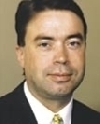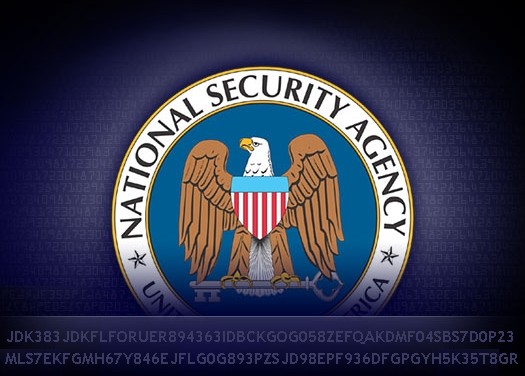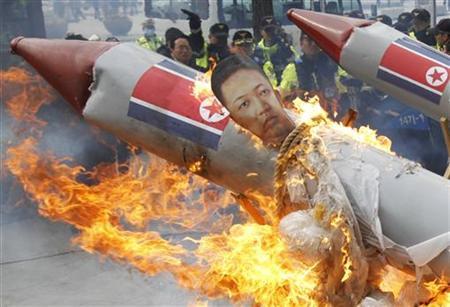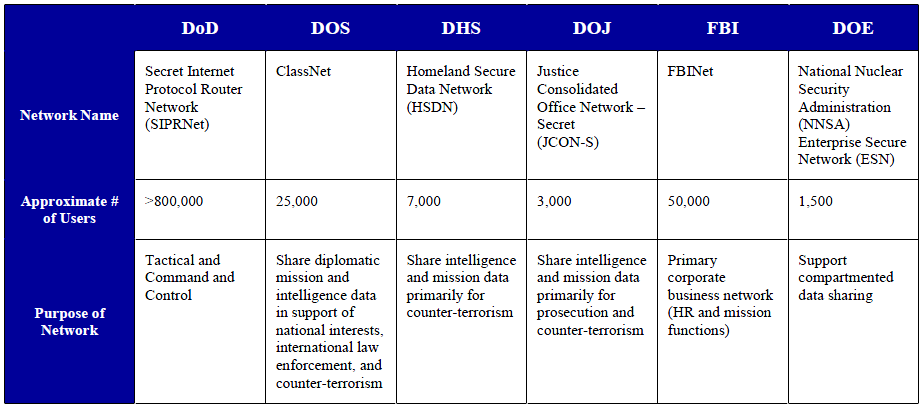Become a Patron!
True Information is the most valuable resource and we ask you to give back.

(L to R) Vice President George H. W. Bush, President Ronald Reagan and President Mikhail Gorbachev during the Governor’s Island summit, December 1988. (Credit: Ronald Reagan Presidential Library)
Marking the 85thbirthday of former Soviet leader Mikhail Gorbachev, the National Security Archive at George Washington University (www.nsarchive.org) today posted a series of previously classified British and American documents containing Western assessments of Gorbachev starting before he took office in March 1985, and continuing through the end of the Soviet Union in 1991.
The documents show that conservative British politicians were ahead of the curve predicting great things for rising Soviet star Gorbachev in 1984 and 1985, but the CIA soon caught on, describing the new Soviet leader only three months into his tenure as “the new broom,” while Ronald Reagan greeted Gorbachev’s ascension with an immediate invitation for a summit. The documents posted today include positive early assessments by Margaret Thatcher and MP John Browne, CIA intelligence reports that bookend Gorbachev’s tenure from 1985 to 1991, the first letters exchanged by Reagan and Gorbachev, the American versions of key conversations with Gorbachev at the Geneva, Reykjavik and Malta summits, German chancellor Helmut Kohl’s credit to Gorbachev in 1989 for the fall of the Berlin Wall and the end of the Cold War, and the U.S. transcript of the G-7 summit in 1990 that turned down Gorbachev’s request for financial aid.
The Archive gathered the Gorbachev documentation for two books, the Link-Kuehl-Award-winning “Masterpieces of History”: The Peaceful End of the Cold War in Europe 1989 (Central European University Press, 2010), and the forthcoming Last Superpower Summits: Gorbachev, Reagan and Bush (CEU Press, 2016). The sources include the Margaret Thatcher Foundation, the Ronald Reagan Presidential Library, the George H.W. Bush Presidential Library, and Freedom of Information and Mandatory Declassification Review requests to the CIA and the State Department.
Leading today’s Gorbachev briefing book is British Prime Minister Margaret Thatcher’s “discovery” of Gorbachev in December 1984 during his trip to Britain as head of a Soviet parliamentary delegation. In contrast to his elderly and infirm predecessors who slowly read dry notes prepared for them, Gorbachev launched into animated free discussion and left an indelible impression on Lady Thatcher. The Prime Minister, charmed by the Soviet leader, quickly shared her impressions with her closest ally and friend, Ronald Reagan. She commented famously, “I like Mr. Gorbachev. We can do business together.”

Alexander Yakovlev, Mikhail Gorbachev, Eduard Shevardnadze walking in the Kremlin, 1989 (personal archive of Anatoly Chernyaev)
Soon after Gorbachev became the Soviet General Secretary, a Conservative member of the British parliament, John Browne, who observed Gorbachev during his visit to Britain and then followed information on Gorbachev’s every early step, compared him to “Kennedy in the Kremlin” in terms of his charisma. By June 1985, the CIA told senior U.S. officials in a classified assessment that Gorbachev was “the new broom” that was attempting to clean up the years of debris that accumulated in the Soviet Union during the era of stagnation.
But Reagan had to see for himself. For four years before Gorbachev, as the American president complained in his diary, he had been trying to meet with a Soviet leader face to face, but “they keep dying on me.” In his first letter to Gorbachev, which Vice President George H.W. Bush carried to Moscow for the funeral of Gorbachev’s predecessor, Reagan invited Gorbachev to meet. Gorbachev and Reagan became pen-pals who wrote long letters – sometimes personally dictated, even handwritten – explaining their positions on arms control, strategic defenses, and the need for nuclear abolition.
Their first meeting took place in Geneva in November 1985, where in an informal atmosphere of “fireside chats” they began realizing that the other was not a warmonger but a human being with a very similar dream—to rid the world of nuclear weapons. That dream came very close to a breakthrough during Gorbachev and Reagan’s summit in Reykjavik; but Reagan’s stubborn insistence on SDI and Gorbachev’s stubborn unwillingness to take Reagan at his word on technology sharing prevented them from reaching their common goal.
Through a series of unprecedented superpower summits, Gorbachev made Reagan and Bush understand that the Soviet leader was serious about transforming his country not to threaten others, but to help its own citizens live fuller and happier lives, and to be fully integrated into the “family of nations.” Gorbachev also learned from his foreign counterparts, establishing a kind of peer group with France’s Mitterrand, Germany’s Kohl, Britain’s Thatcher, and Spain’s Gonzalez, which developed his reformist positions further and further. By the time George H.W. Bush as president finally met Gorbachev in Malta, the Soviet Union was having free elections, freedom of speech was blossoming, velvet revolutions had brought reformers to power in Eastern Europe, and the Berlin Wall had fallen to cheers of citizens but severe anxieties in other world capitals.
German Chancellor Helmut Kohl wrote in his letter to Bush at the end of November 1989: “Regarding the reform process in Poland, Hungary, Bulgaria, the CSSR [Czechoslovakia], and not least the GDR [East Germany], we have General Secretary Gorbachev’s policies to thank. His perestroika has let loose, made easier, or accelerated these reforms. He pushed governments unwilling to make reforms toward openness and toward acceptance of the people’s wishes; and he accepted developments that in some instances far surpassed the Soviet Union’s own standards.”
In 1989, the dream of what Gorbachev called “the common European home” was in the air and Gorbachev was the most popular politician in the world. When he was faced with discontent and opposition in his country, he refused to use force, like his Chinese neighbors did at Tiananmen Square. And yet, the West consistently applied harsher standards to Gorbachev’s Soviet Union than to China, resulting in feet dragging on financial aid, credits, and trade. As Francois Mitterrand pointed out during the G-7 summit in Houston in 1990: “the argument put forth for helping China is just the reverse when we are dealing with the USSR. We are too timid […] regarding aid to the USSR. […].”
What Gorbachev started in March 1985 made his country and the world better. In cooperation with Reagan and Bush, he ended the Cold War, pulled Soviet troops out of Afghanistan, helped resolve local conflicts around the globe, and gave Russia the hope and the opportunity to develop as a normal democratic country. As with many great reformers, he did not achieve everything he was striving for – he certainly never intended for the Soviet Union to collapse – but his glasnost, his non-violence, and his “new thinking” for an interdependent world created a legacy that few statesmen or women can match. Happy birthday, Mikhail Sergeyevich!
READ THE DOCUMENTS













Gorbachev Definition, Gorbachev Cold War, Gorbachev Wife, Gorbachev Age, Gorbachev Pizza Hut, Gorbachev Apush, Gorbachev Quotes, Gorbachev Wall, Gorbachev Resigns, Gorbachev Tear Down This Wall, Gorbachev Age, Gorbachev Apush, Gorbachev And Reagan, Gorbachev Ap Euro, Gorbachev And Perestroika, Gorbachev And Yeltsin, Gorbachev And Putin, Gorbachev Accomplishments, Gorbachev And Reagan Meeting, Gorbachev Alive, Gorbachev Berlin Wall, Gorbachev Biography, Gorbachev Birthday, Gorbachev Becomes Leader, Gorbachev Book, Gorbachev Birthmark Jokes, Gorbachev Becomes Premier Of Soviet Union, Gorbachev Becomes President, Gorbachev Brezhnev, Gorbachev Becomes Soviet Leader Date, Gorbachev Cold War, Gorbachev Comes To Power, Gorbachev Coup, Gorbachev Cartoon, Gorbachev Communism, Gorbachev Corn, Gorbachev Chernobyl, Gorbachev Commercial, Gorbachev Came To Power, Gorbachev Comes To Power Date, Gorbachev Definition, Gorbachev Death, Gorbachev Doctrine, Gorbachev Daughter, Gorbachev Definition Quizlet, Gorbachev Detente, Gorbachev Democracy, Gorbachev Domestic Policy, Gorbachev Daily Show, Gorbachev Doll, Gorbachev Economic Reforms, Gorbachev Era, Gorbachev Election, Gorbachev Ended The Cold War, Gorbachev End Of Communism, Gorbachev Effect, Gorbachev End Of Soviet Union, Gorbachev East Germany, Gorbachev Establishes Glasnost And Perestroika, Gorbachev Elected President, Gorbachev Foreign Policy, Gorbachev Facts, Gorbachev Foundation, Gorbachev Freedom Of Speech, Gorbachev Frees Warsaw Pact Nations, Gorbachev Forehead, Gorbachev Funny, Gorbachev Fall Of Ussr, Gorbachev Family, Gorbachev Fun Facts, Gorbachev Glasnost, Gorbachev Grammy, Gorbachev Good Or Bad, Gorbachev Goals, Gorbachev General Secretary, Gorbachev Glasnost Speech, Gorbachev Gif, Gorbachev Granddaughter, Gorbachev Government, Gorbachev Glasnost Perestroika Apush, Gorbachev Head, Gorbachev History, Gorbachev Height, Gorbachev History Definition, Gorbachev Home, Gorbachev Health, Gorbachev How To Pronounce, Gorbachev House, Gorbachev Historiography, Gorbachev Held Hostage, Gorbachev Introduces Perestroika, Gorbachev In Power, Gorbachev In The Cold War, Gorbachev Images, Gorbachev Interview, Gorbachev Importance, Gorbachev Initiative, Gorbachev Is He Still Alive, Gorbachev Ideology, Gorbachev Important Events, Gorbachev Jokes, Gorbachev Jfk, Gorbachev Jason Jones, Gorbachev Jump, Gorbachev John D Clare, Gorbachev John Paul Ii, Gorbachev Yeltsin, Jontron Gorbachev, Gorbachev Birthmark Jokes, Mikhail Gorbachev Job, Gorbachev Khrushchev, Gorbachev Known For, Gorbachev Kgb, Gorbachev Katyn, Gorbachev Knock Down That Wall, Gorbachev Kennedy, Gorbachev Kimdir, Gorbachev Key Policies, Gorbachev Key Dates, Gorbachev Kohl, Gorbachev Louis Vuitton, Gorbachev Legacy, Gorbachev Leadership, Gorbachev Leads Soviet Union, Gorbachev Life, Gorbachev Lives In California, Gorbachev Lithuania, Gorbachev Leader, Gorbachev Lesson Plan, Gorbachev Limousine, Gorbachev Memes, Gorbachev Mikhail, Gorbachev Moves Toward Democracy, Gorbachev Mark, Gorbachev Meaning, Gorbachev Memoirs, Gorbachev Man Of The Year, Gorbachev Moves Toward Democracy Guided Reading, Gorbachev Military Policy, Gorbachev Mask, Gorbachev Nobel Peace Prize, Gorbachev Now, Gorbachev New Thinking, Gorbachev Net Worth, Gorbachev News, Gorbachev Nuclear Disarmament, Gorbachev Newspaper, Gorbachev Nesting Dolls, Gorbachev Nobel Peace Prize Speech, Gorbachev New World Order, Gorbachev On Putin, Gorbachev On Trump, Gorbachev On Reagan, Gorbachev On Stalin, Gorbachev On Reagan Death, Gorbachev Oval Office, Gorbachev On Perestroika, Gorbachev Opposition, Gorbachev On Ronald Reagan, Gorbachev Or Gorbachev, Gorbachev Policies, Gorbachev Pizza Hut, Gorbachev Perestroika, Gorbachev Putin, Gorbachev Political Cartoons, Gorbachev President, Gorbachev Plan, Gorbachev Political Views, Gorbachev Pronounce, Gorbachev Personality, Gorbachev Quotes, Gorbachev Quizlet, Gorbachev Quotes On Perestroika, Gorbachev Quotes On Reagan, Gorbachev Quotes On Glasnost, Gorbachev Quote On Eu, Gorbachev Quora, Gorbachev Quotes On Cold War, Gorbachev Reforms, Gorbachev Resigns, Gorbachev Reagan, Gorbachev Russia, Gorbachev Revolution, Gorbachev Rise To Power, Gorbachev Residence, Gorbachev Resignation Speech, Gorbachev Religion, Gorbachev Reagan Summits, Gorbachev Speech, Gorbachev Significance, Gorbachev Scar, Gorbachev Still Alive, Gorbachev Supermarket, Gorbachev Soviet Union, Khrushchev Shoe, Gorbachev Steps Down, Gorbachev Speech 1988, Gorbachev Summary, Gorbachev Tear Down This Wall, Gorbachev Today, Gorbachev Takes Power, Gorbachev Trump, Gorbachev Twin Peaks, Gorbachev Timeline, Gorbachev Time Magazine, Gorbachev Title, Gorbachev Twitter, Gorbachev Tear Down The Wall, Gorbachev Ussr, Gorbachev Un Speech, Gorbachev Ufo, Gorbachev Us Relations, Gorbachev Ukraine, Gorbachev Us Visit, Gorbachev Us History, Gorbachev Ufo Quote, Gorbachev Urban Dictionary, Gorbachev Us Supermarket, Gorbachev Vs Putin, Gorbachev Vs Reagan, Gorbachev Visits Us, Gorbachev Vodka, Gorbachev Visits Canada, Gorbachev And Yeltsin, Gorbachev Video, Gorbachev Vice President, Gorbachev And Stalin, Gorbachev Visits Grocery Store, Gorbachev Wife, Gorbachev Wall, Gorbachev Wiki, Gorbachev War, Gorbachev Warsaw Pact, Gorbachev Wine Stain, Gorbachev White House, Gorbachev Ww3, Gorbachev With Hair, Gorbachev What Did He Do, Gorbachev Xi Jinping, Xenia Gorbachev, Mikhail Gorbachev, Reagan Gorbachev Xbox One, Gorbachev Deng Xiaoping, Reagan Gorbachev Xbox Review, Reagan Gorbachev Xbox One Walkthrough, Reagan And Gorbachev, Reagan Vs Gorbachev Xbox, Gorbachev Young, Gorbachev Yeltsin, Gorbachev Yeltsin Putin, Gorbachev Youtube, Gorbachev Yahoo, Gorbachev Years Of Presidency, Gorbachev Yeltsin 1991, Gorbachev Yuri, Gorbachev Yugoslavia, Gorbachev Youth, National Security Archive Gwu, National Security Archive Internship, National Security Archive Guatemala, National Security Archive Atomic Bomb, National Security Archive Electronic Briefing Book, National Security Archives Cuban Missile Crisis, National Security Archive Chile, National Security Archive Bay Of Pigs, National Security Archive Iran Contra, National Security Archive Iran, National Security Archive Atomic Bomb, National Security Archive Argentina, National Security Archive At George Washington University, National Security Archive Able Archer, National Security Archive Area 51, National Security Archive Afghanistan, National Security Archive Address, National Security Agency Archive, Scott Armstrong National Security Archive, National Security Archive Bay Of Pigs, National Security Archive Briefing Book No. 598, National Security Archive Blog, National Security Archive Brazil, National Security Archive Berlin Wall, National Security Archive Briefing Books, National Security Archive Bombs, National Archives Security Breach, National Security Archive Atomic Bomb, National Security Archive Tom Blanton, National Security Archive Chile, National Security Archive Chiquita, National Security Archive Colombia, National Security Archives Cuban Missile Crisis, National Security Archive Cuba, National Security Archive Cold War Readers, National Security Archive Cold War, National Security Council Archive, National Security Archive Iran Contra, Carlos Osorio National Security Archive, National Security Archive Documents, National Security Archive Database, National Security Archive Dirty War, National Security Archive Mexico Dirty War, National Security Archive Kate Doyle, National Security Archive Washington Dc, Digital National Security Archive Proquest, How To Cite National Security Archive Documents, Digital National Security Archive Library, Declassified National Security Archive, National Security Archive Electronic Briefing Book, National Security Archive El Salvador, National Security Archive Michael Evans, Emily Willard National Security Archive, East Timor Revisited National Security Archive, Www.gwu.edu National Security Archive, National Security Archive Foia, National Security Archive Fund, National Security Archive Foia Guide, National Security Archive Fund Inc, National Security Archive San Fernando, National Security Archive Gwu, National Security Archive Guatemala, National Security Archive Gulf Of Tonkin, National Security Archive Foia Guide, Georgetown National Security Archive, National Security Archive Hiroshima, Lauren Harper National Security Archive, How To Cite National Security Archive Documents, National Security Archive Internship, National Security Archive Iran Contra, National Security Archive Iran, National Security Archive Iraq War, National Security Archive Iraq, National Security Archive Iran 1953, National Security Archive In Washington, National Security Archive Iran Iraq War, National Security Archive Intern, National Security Internet Archive, National Security Archive Jobs, National Security Archive Nate Jones, Joyce Battle National Security Archive, John Prados National Security Archive, National Security Archive Kate Doyle, National Security Archive Kissinger, Digital National Security Archive Library, Lauren Harper National Security Archive, National Security Archive Mexico, National Security Archive Mexico Dirty War, National Security Archive Michael Evans, National Archives Security Measures, National Security Archives Cuban Missile Crisis, Malcolm Byrne National Security Archive, National Security Archive Nuclear Vault, National Security Archive Nsa, National Security Archive Nate Jones, National Security Archive Operation Northwoods, National Security Archive Operation Northwoods, National Security Archive Of George Washington University, National Security Archive Bay Of Pigs, National Security Archive Gulf Of Tonkin, Carlos Osorio National Security Archive, National Security Archive Pinochet, National Security Archive Polo Step, Digital National Security Archive Proquest, National Security Archive Mexico Project, National Security Archive Bay Of Pigs, Peter Kornbluh National Security Archive, National Security Archive Rwanda, National Security Archive Reykjavik, National Security Archive Cold War Readers, Jeffrey Richelson National Security Archive, East Timor Revisited National Security Archive, National Security Archive Staff, National Security Archive San Fernando, National Security Strategy Archive, National Security Archive El Salvador, National Security Archive United States, National Security Archive Polo Step, National Security Archive Tiananmen Square, National Security Archives Search, National Archives Security System, Scott Armstrong National Security Archive, National Security Archive Twitter, National Security Archive Tlatelolco, National Security Archive Torture, National Security Archive Tom Blanton, National Security Archive Tiananmen Square, National Security Archive At The George Washington University, National Security Archive Gulf Of Tonkin, The National Security Archive, The National Security Archive Atomic Bomb, The National Security Archive Website, National Security Archive Us, National Security Archive United States, National Security Archive Uk, National Security Archive Unredacted, National Security Archive Uribe, National Security Archive Washington University, National Security Council Us Archive, Us Digital National Security Archive, Us National Security Strategy Archive, National Security Archive Vietnam, National Security Archive Venezuela, National Security Archive Nuclear Vault, National Security Archive Washington, National Security Archive Washington Dc, National Security Archive Washington University, National Security Archive Wiki, National Security Archive Iraq War, National Security Archive Cold War Readers, National Security Archive Cold War, National Security Archive Dirty War, National Security Archive Mexico Dirty War, National Security Archive Iran Iraq War























![Inside the biological weapons factory at Stepnogorsk, Kazakhstan, where the Soviet Union was prepared to make tons of anthrax if the orders came from Moscow [Photo courtesy Andy Weber]](https://nsarchive.files.wordpress.com/2014/07/stepnogorsk_400.jpg?w=300&h=204)

















You must be logged in to post a comment.